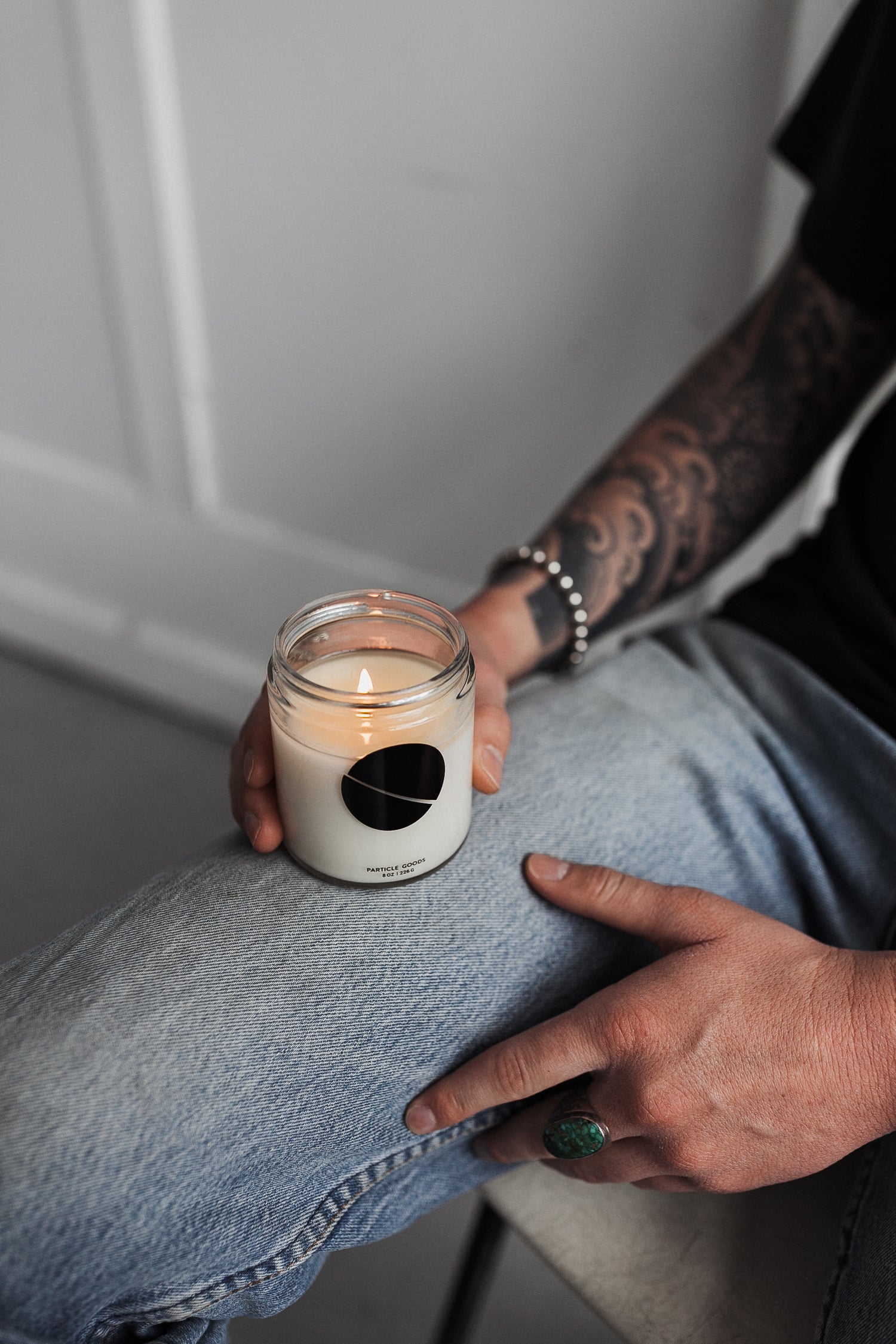
It’s a common myth that only paraffin candles soot. The truth is, even candles made with natural wax can have this issue, because sooting is caused by an incomplete chemical reaction, NOT the wax type.
What is candle soot?
Candles burn through capillary action, which means the liquid wax is drawn up the wick and delivered to the flame as fuel. Sooting can happen any time this process is interrupted and the fuel escapes the flame before it can fully combust. Those partially burned carbons are expelled into the air as soot and smoke.
What causes sooting?
Improper wick size + untrimmed wicks:
If a wick is too large or hasn’t been trimmed, the wick will deliver too much fuel to the flame, causing it to over-consume the wax. Larger flames lose stability and as it flickers some of the fuel escapes the flame before it can fully combust, sending those partially burned carbons into the air as soot and smoke. The excess carbons may also build up on the tip of the wick, causing it to "mushroom" like in the photo below.
Solution → Practice proper candle care and always trim your wick before each new burn.

Air drafts:
If a candle is placed in a drafty area, or in a bathroom where there is excess moisture and steam, this will destabilize the flame and the combustion process may be repeatedly interrupted and lead to sooting.
Solution → Move candles away from open windows or AC vents, or place candles into a hurricane vase if burning outside or in drafty areas.

Overburning:
Candles should only be burned until they reach a full melt pool, which usually takes about 1 hr per inch in diameter of the vessel. "Powerburning" or burning the candle continuously beyond that point will thin the wax and speed up consumption. As we learned earlier, giving the flame too much fuel too quickly leads to flame instability + sooting.
Solution → Blow the candle out after it reaches a full melt pool. If you wish to keep burning it, you can trim the wick and relight it, though your candle may not last as long.
Note: paraffin was has a very low melting point which makes it tricky to wick correctly. Paraffin candles are more prone to sooting because they tend to be overwicked by the manufacturer and overburned by the consumer. Proper candle care is especially important with paraffin and low melt point wax (like coconut wax) if you want to avoid sooting

Hopefully this has cleared up any confusion you might have had about candle sooting!





